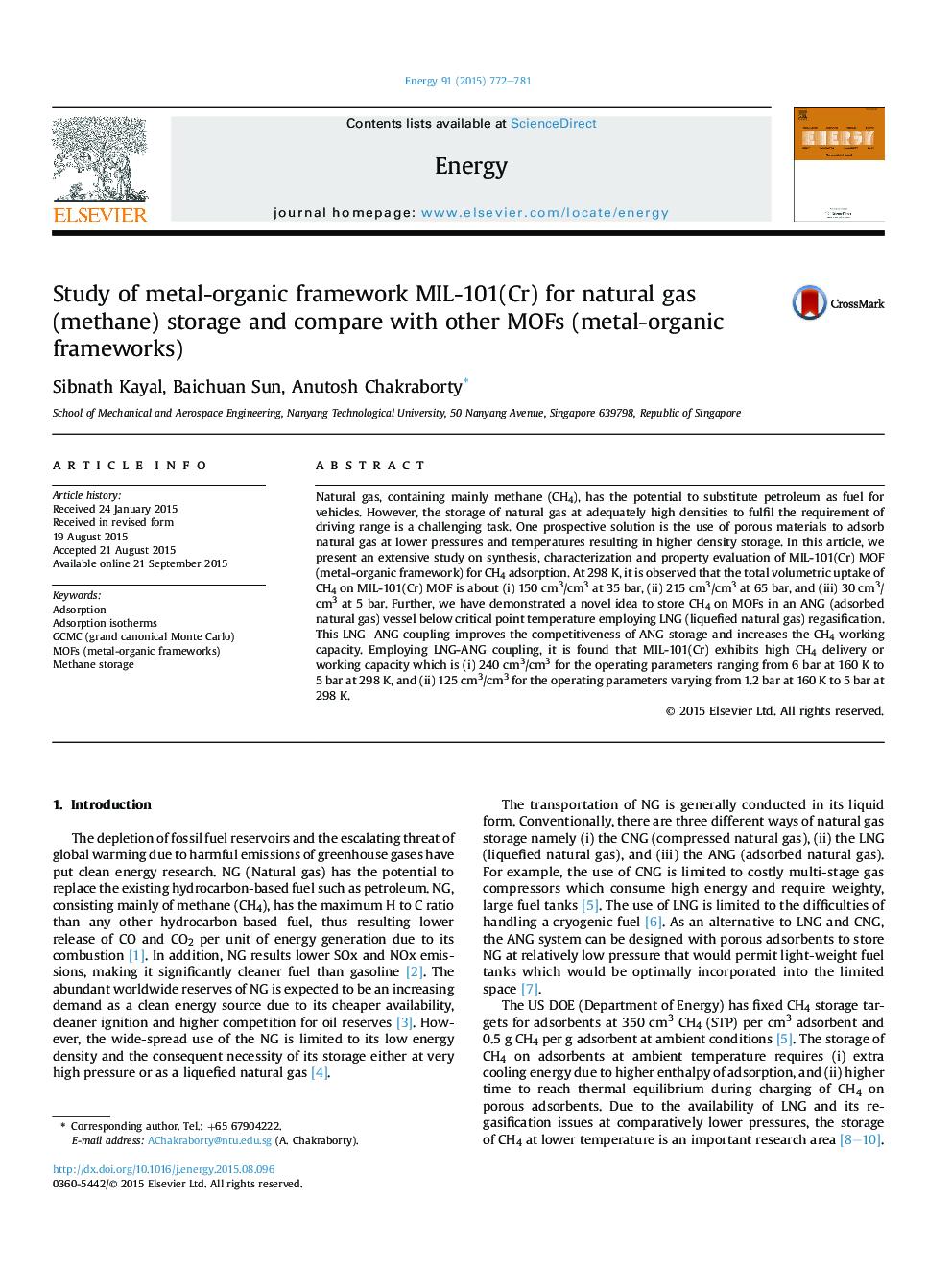| کد مقاله | کد نشریه | سال انتشار | مقاله انگلیسی | نسخه تمام متن |
|---|---|---|---|---|
| 1731534 | 1521455 | 2015 | 10 صفحه PDF | دانلود رایگان |

• We have synthesized porous MIL-101(Cr) MOF using a modified fluorine free synthesis route.
• The gravimetric and volumetric uptakes of CH4 are illustrated under ANG-LNG coupling conditions.
• CH4 adsorption characteristic of MIL-101(Cr) is compared with other adsorbents.
• MIL-101(Cr) framework does not transform after CH4 adsorption runs.
• Insight mechanism of CH4 uptake in MOF structure is studied by GCMC simulation.
Natural gas, containing mainly methane (CH4), has the potential to substitute petroleum as fuel for vehicles. However, the storage of natural gas at adequately high densities to fulfil the requirement of driving range is a challenging task. One prospective solution is the use of porous materials to adsorb natural gas at lower pressures and temperatures resulting in higher density storage. In this article, we present an extensive study on synthesis, characterization and property evaluation of MIL-101(Cr) MOF (metal-organic framework) for CH4 adsorption. At 298 K, it is observed that the total volumetric uptake of CH4 on MIL-101(Cr) MOF is about (i) 150 cm3/cm3 at 35 bar, (ii) 215 cm3/cm3 at 65 bar, and (iii) 30 cm3/cm3 at 5 bar. Further, we have demonstrated a novel idea to store CH4 on MOFs in an ANG (adsorbed natural gas) vessel below critical point temperature employing LNG (liquefied natural gas) regasification. This LNG–ANG coupling improves the competitiveness of ANG storage and increases the CH4 working capacity. Employing LNG-ANG coupling, it is found that MIL-101(Cr) exhibits high CH4 delivery or working capacity which is (i) 240 cm3/cm3 for the operating parameters ranging from 6 bar at 160 K to 5 bar at 298 K, and (ii) 125 cm3/cm3 for the operating parameters varying from 1.2 bar at 160 K to 5 bar at 298 K.
Journal: Energy - Volume 91, November 2015, Pages 772–781